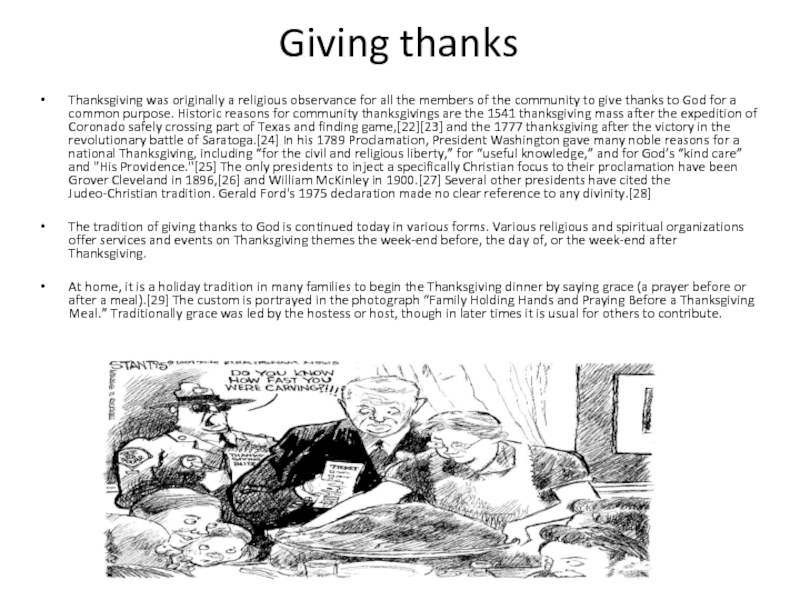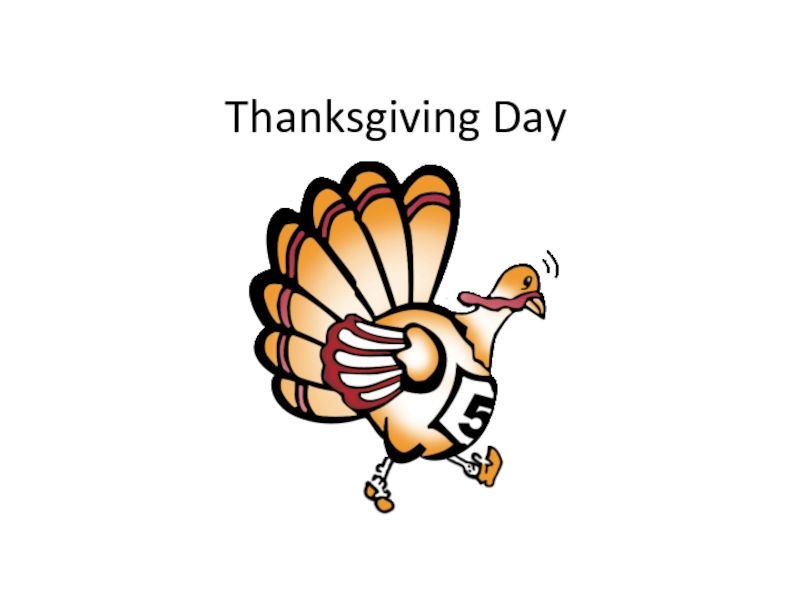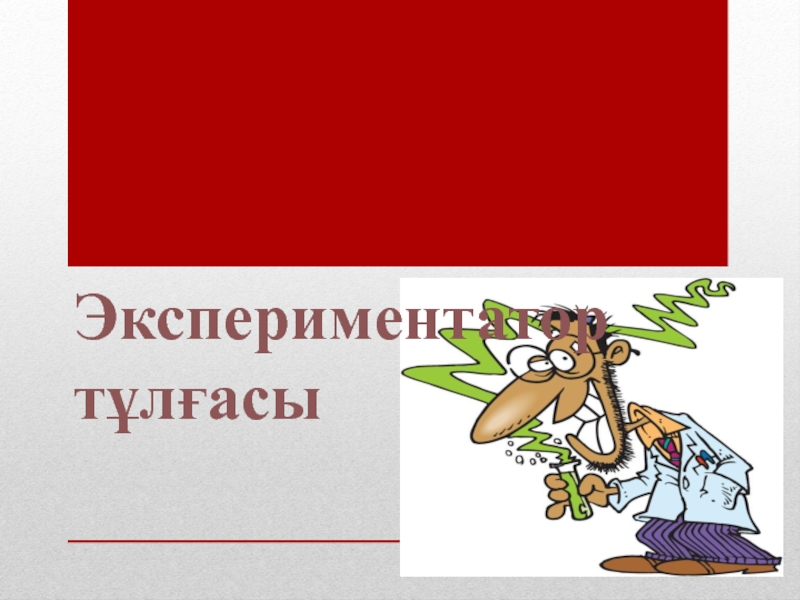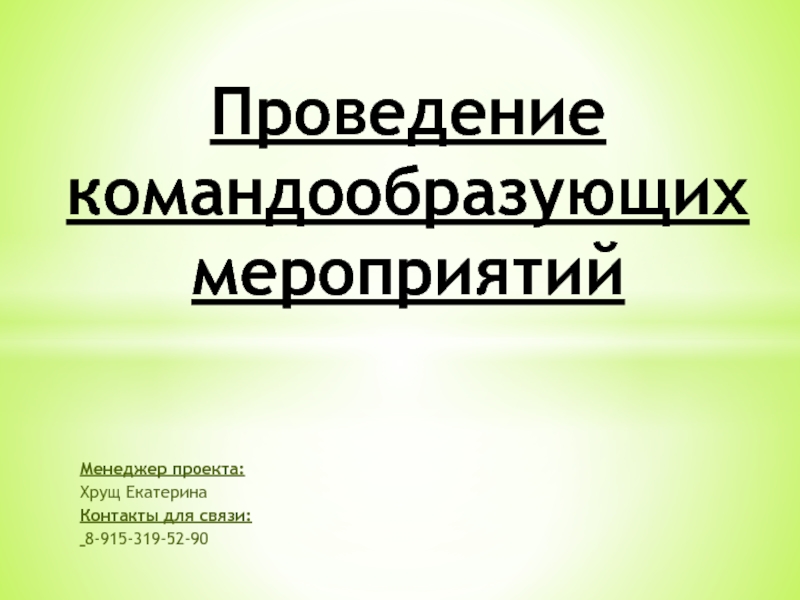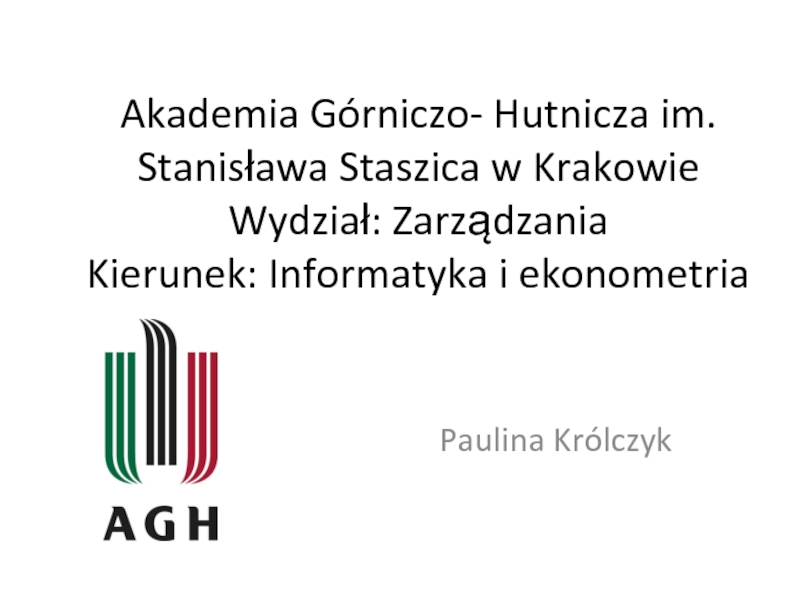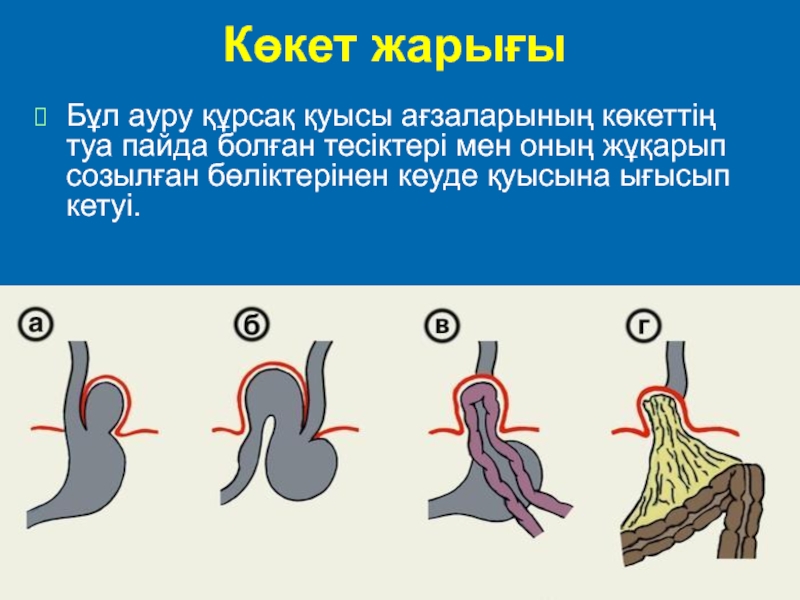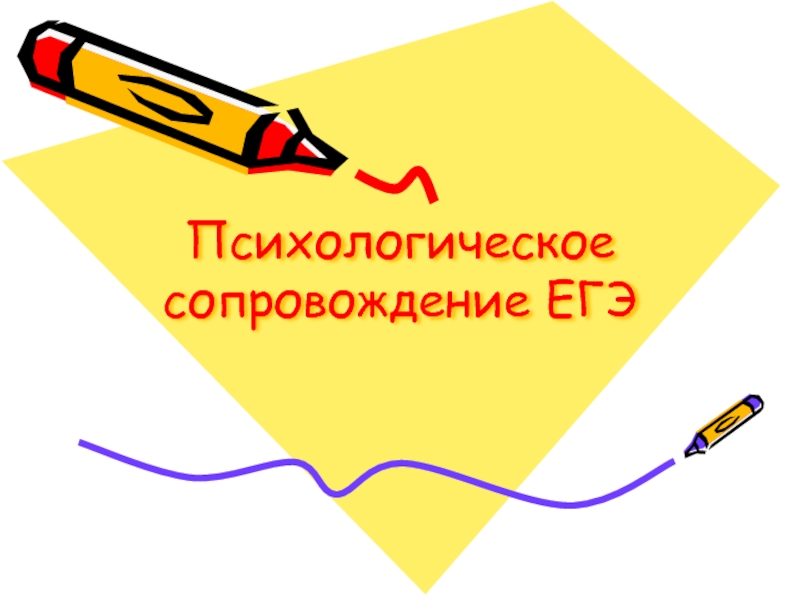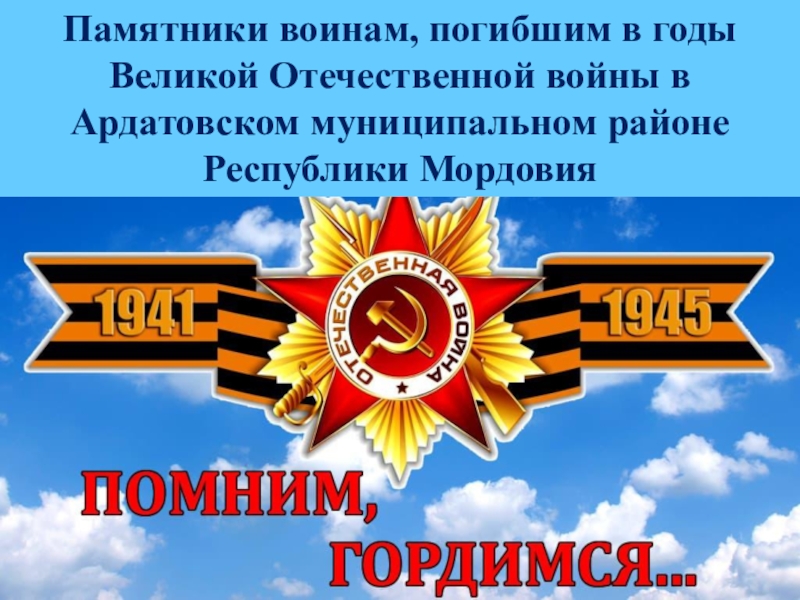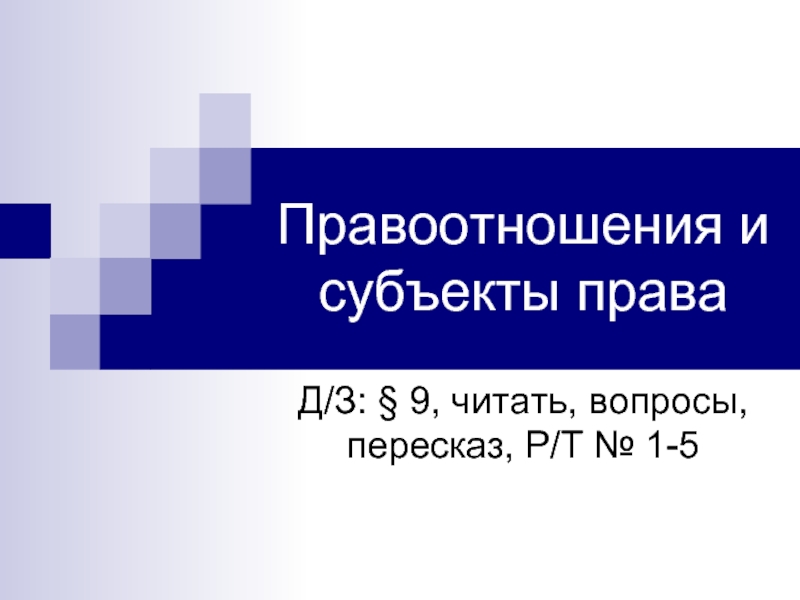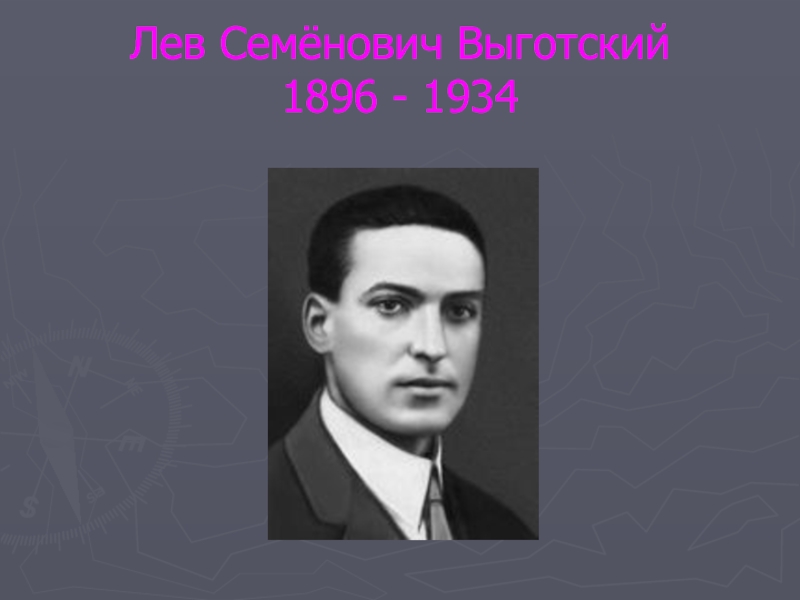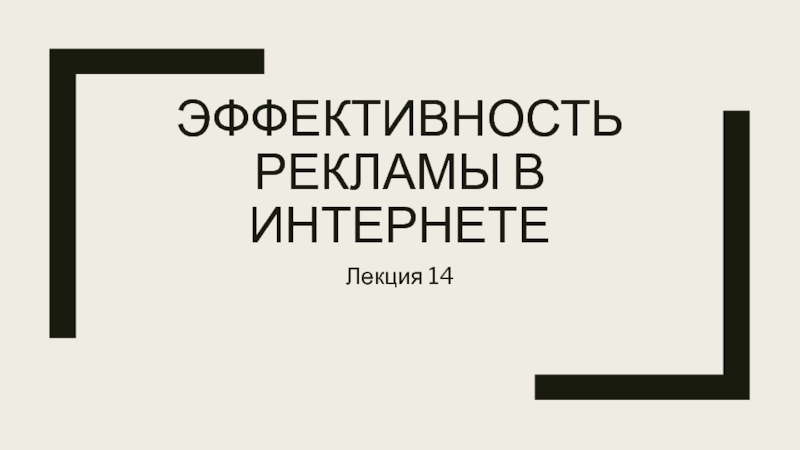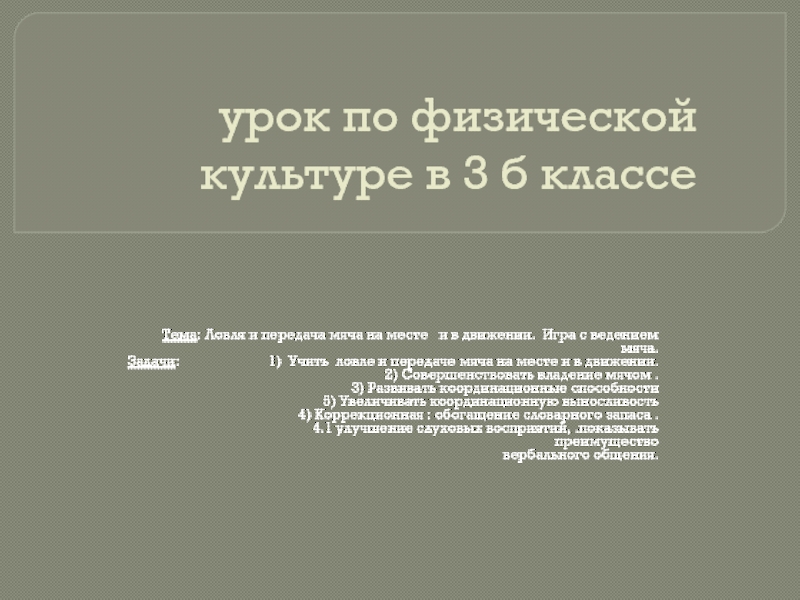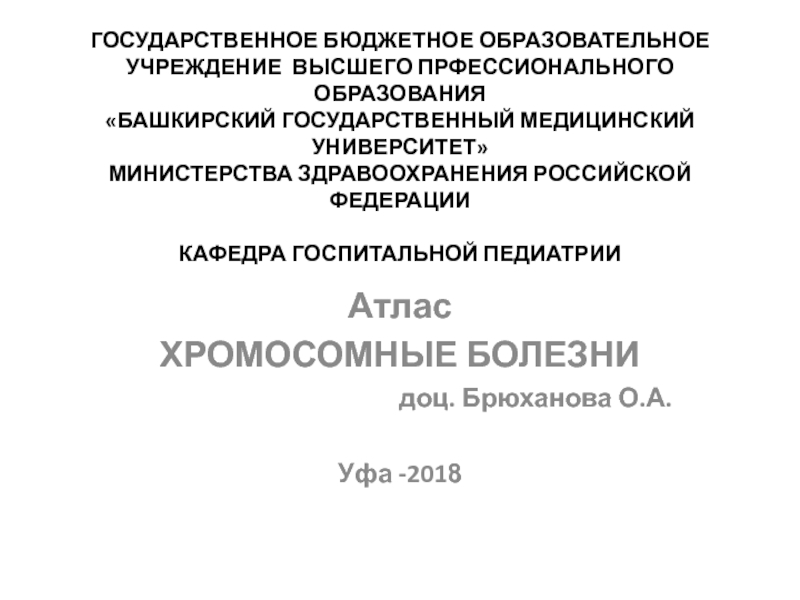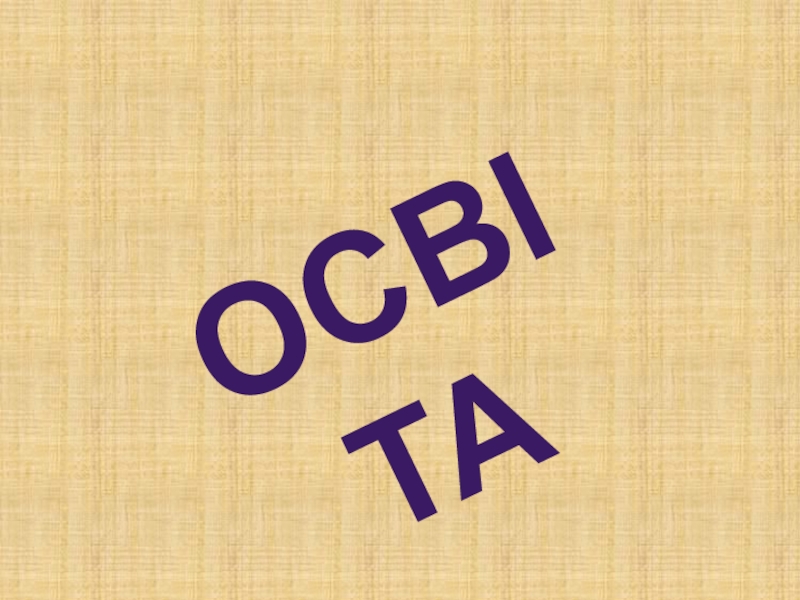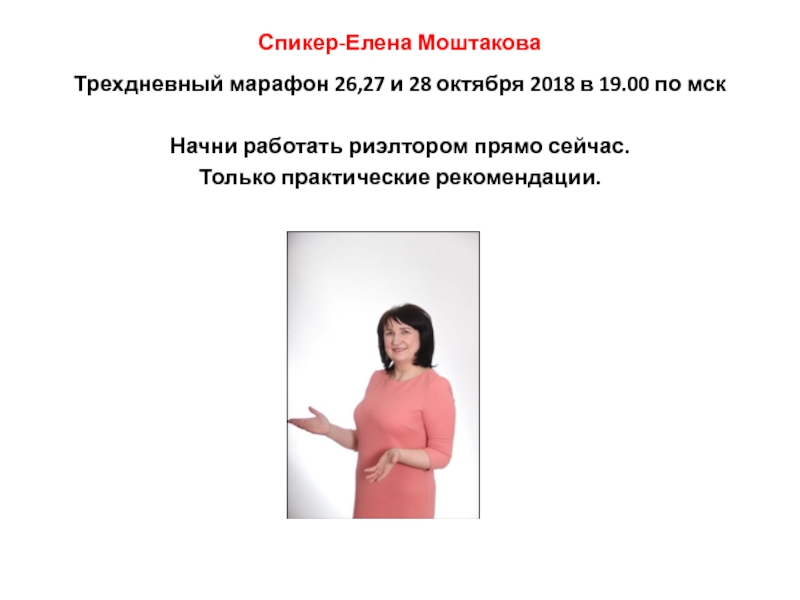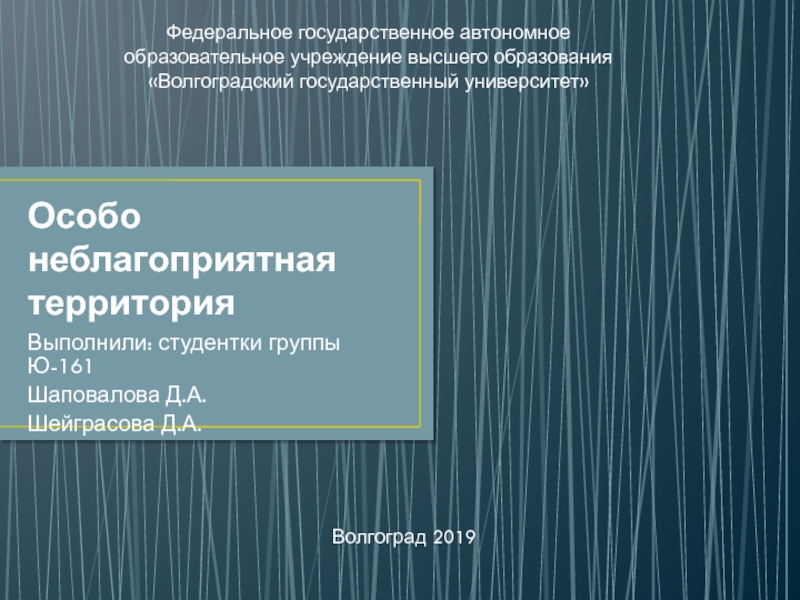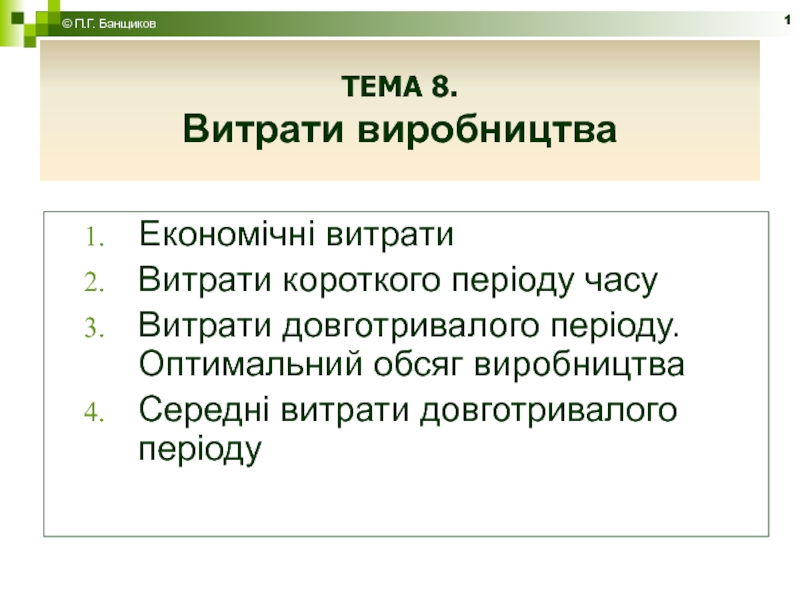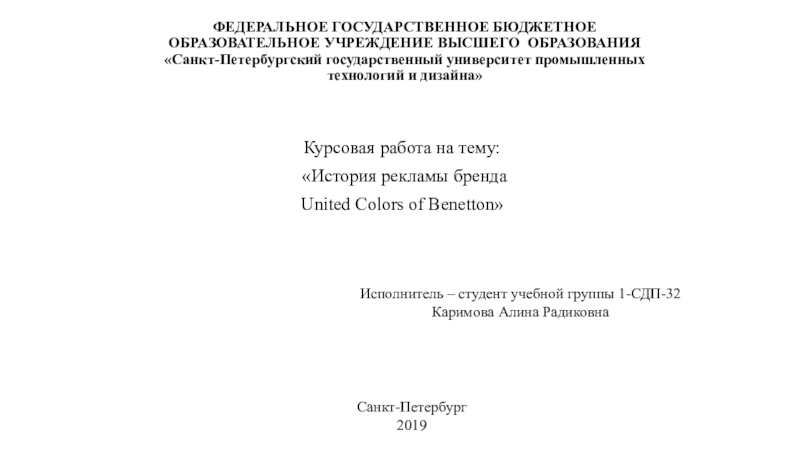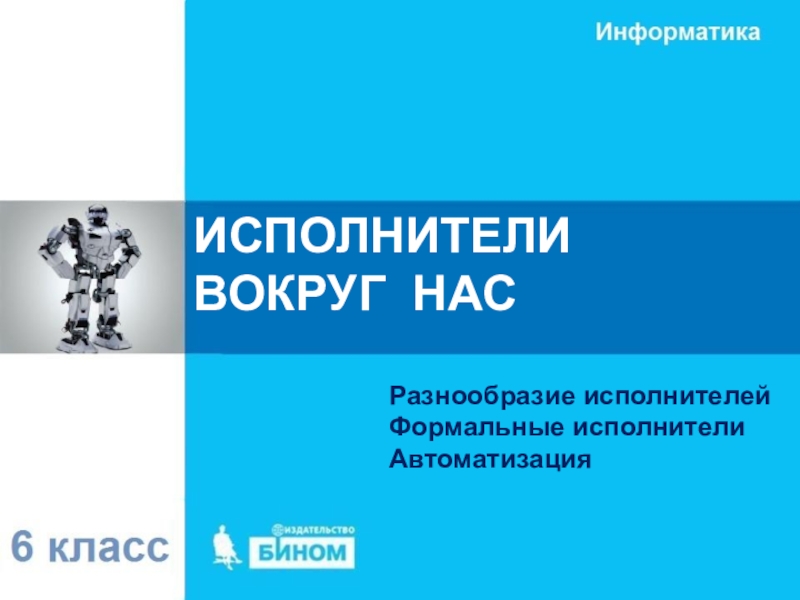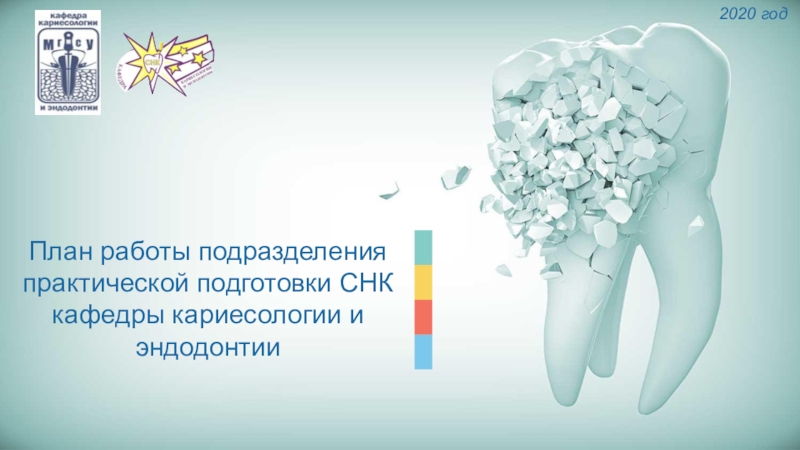Слайд 2The First Thanksgiving Day
History
1619 The true First Thanksgiving, the Virginia
colony
On December 4, 1619, 38 English settlers arrived at Berkeley
Hundred, which comprised about 8,000 acres (32 km²) on the north bank of the James River, near Herring Creek, in an area then known as Charles Cittie, about 20 miles (32 km) upstream from Jamestown, where the first permanent settlement of the Colony of Virginia had been established on May 14, 1607.
The group's charter required that the day of arrival be observed yearly as a "day of thanksgiving" to God. On that first day, Captain John Woodleaf held the service of thanksgiving. As quoted from the section of the Charter of Berkeley Hundred specifying the thanksgiving service: "We ordaine that the day of our ships arrival at the place assigned for plantacon in the land of Virginia shall be yearly and perpetually kept holy as a day of thanksgiving to Almighty God."[5]
During the Indian Massacre of 1622, nine of the settlers at Berkeley Hundreds were killed, as well as about a third of the entire population of the Virginia Colony. The Berkeley Hundred site and other outlying locations were abandoned as the colonists withdrew to Jamestown and other more secure points.
After several years, the site became Berkeley Plantation, and was long the traditional home of the Harrison family, one of the First Families of Virginia. In 1634, it became part of the first eight shires of Virginia, as Charles City County, one of the oldest in the United States, and is located along Virginia State Route 5, which runs parallel to the river's northern borders past sites of many of the James River Plantations between the colonial capital city of Williamsburg (now the site of Colonial Williamsburg) and the capital of the Commonwealth of Virginia at Richmond.
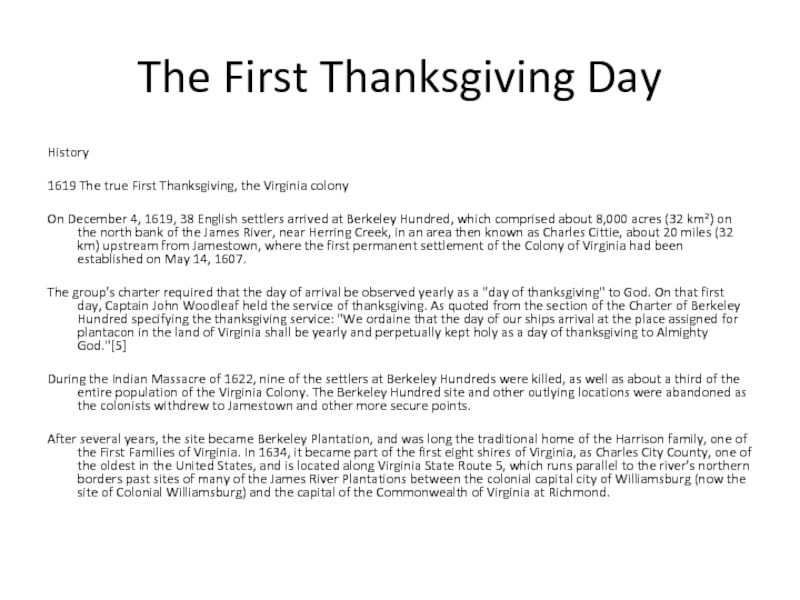
Слайд 31621 Thanksgiving, the Pilgrims at Plymouth
Painting of "The First
Thanksgiving at Plymouth" By Jennie A. Brownscombe. (1914)
The modern Thanksgiving
holiday traces its origins from a 1621 celebration at the Plymouth Plantation, where the Plymouth settlers held a harvest feast after a successful growing season. It is ironic that this iconic event is generally referred to as the "First Thanksgiving", because, in reality, it was not, since it came two years after the true first Thanksgiving that was celebrated in Virginia.
Squanto, a Patuxet Native American who resided with the Wampanoag tribe, taught the Pilgrims how to catch eel and grow corn and served as an interpreter for them (Squanto had learned English while enslaved in Europe and during travels in England). Additionally the Wampanoag leader Massasoit had caused food stores to be donated to the fledgling colony during the first winter when supplies brought from England were insufficient. The Pilgrims set apart a day to celebrate at Plymouth immediately after their first harvest, in 1621. At the time, this was not regarded as a Thanksgiving observance; harvest festivals existed in English and Wampanoag tradition alike. Several colonists gave personal accounts of the 1621 feast in Plymouth, Massachusetts. The Pilgrims, most of whom were Separatists, are not to be confused with Puritans who established their own Massachusetts Bay Colony nearby (current day Boston) in 1628 and had very different religious beliefs.
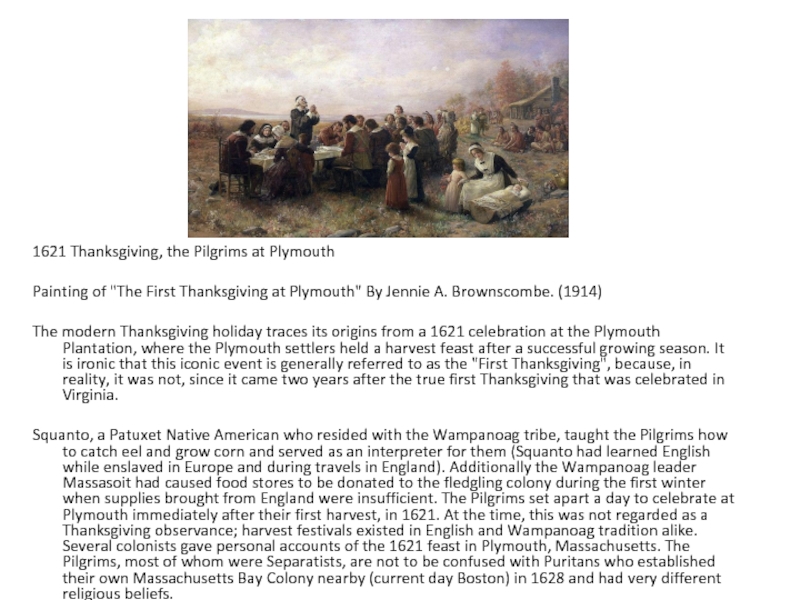
Слайд 4Foods of the season
U.S. tradition compares the holiday with a
meal held in 1621 by the Wampanoag and the Pilgrims
who settled in Plymouth, Massachusetts. It is continued in modern times with the Thanksgiving dinner, traditionally featuring turkey, playing a large role in the celebration of Thanksgiving. Some of the details of the American Thanksgiving story are myths that developed in the 1890s and early 1900s as part of the effort to forge a common national identity in the aftermath of the Civil War and in the melting pot of new immigrants.
Traditional Thanksgiving Dinner
In the United States, certain kinds of food are traditionally served at Thanksgiving meals. Firstly, baked or roasted turkey is usually the featured item on any Thanksgiving feast table (so much so that Thanksgiving is sometimes referred to as "Turkey Day"). Stuffing, mashed potatoes with gravy, sweet potatoes, cranberry sauce, sweet corn, other fall vegetables, and pumpkin pie are commonly associated with Thanksgiving dinner. All of these are actually native to the Americas or were introduced as a new food source to the Europeans when they arrived. As an alternative to turkey, many vegetarians or vegans eat tofurky, a meatless turkey made of tofu.
The less fortunate are often provided with food at Thanksgiving time. Most communities have annual food drives that collect non-perishable packaged and canned foods, and corporations sponsor charitable distributions of staple foods and Thanksgiving dinners.
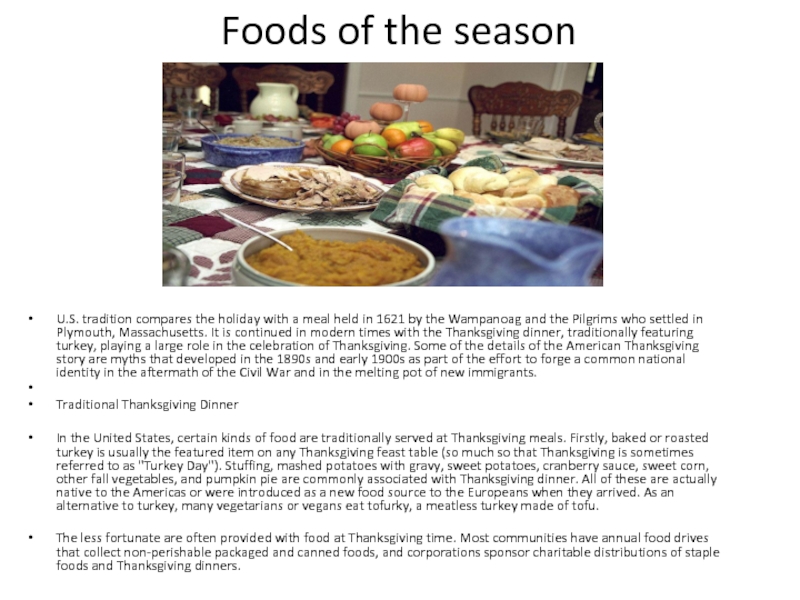
Слайд 5Giving thanks
Thanksgiving was originally a religious observance for all the
members of the community to give thanks to God for
a common purpose. Historic reasons for community thanksgivings are the 1541 thanksgiving mass after the expedition of Coronado safely crossing part of Texas and finding game,[22][23] and the 1777 thanksgiving after the victory in the revolutionary battle of Saratoga.[24] In his 1789 Proclamation, President Washington gave many noble reasons for a national Thanksgiving, including “for the civil and religious liberty,” for “useful knowledge,” and for God’s “kind care” and "His Providence."[25] The only presidents to inject a specifically Christian focus to their proclamation have been Grover Cleveland in 1896,[26] and William McKinley in 1900.[27] Several other presidents have cited the Judeo-Christian tradition. Gerald Ford's 1975 declaration made no clear reference to any divinity.[28]
The tradition of giving thanks to God is continued today in various forms. Various religious and spiritual organizations offer services and events on Thanksgiving themes the week-end before, the day of, or the week-end after Thanksgiving.
At home, it is a holiday tradition in many families to begin the Thanksgiving dinner by saying grace (a prayer before or after a meal).[29] The custom is portrayed in the photograph “Family Holding Hands and Praying Before a Thanksgiving Meal.” Traditionally grace was led by the hostess or host, though in later times it is usual for others to contribute.
